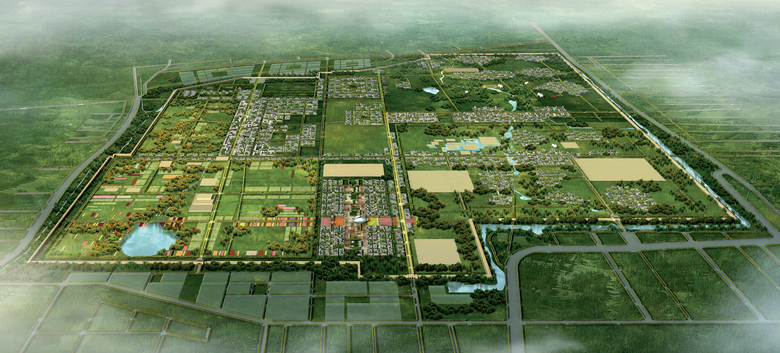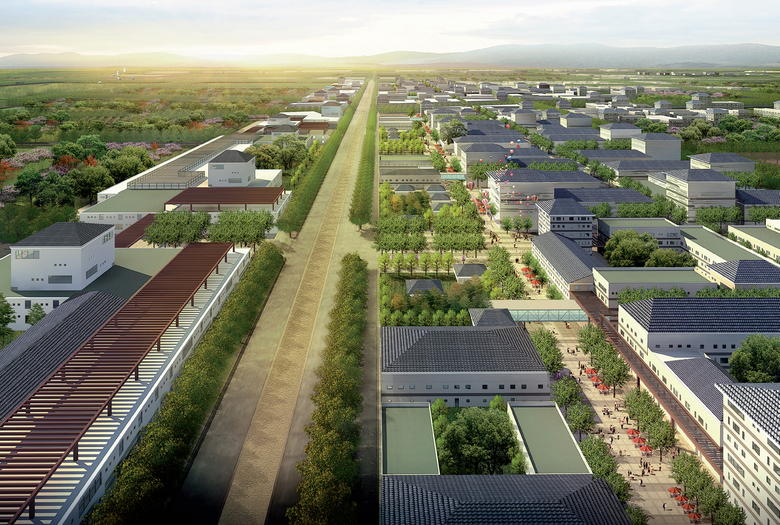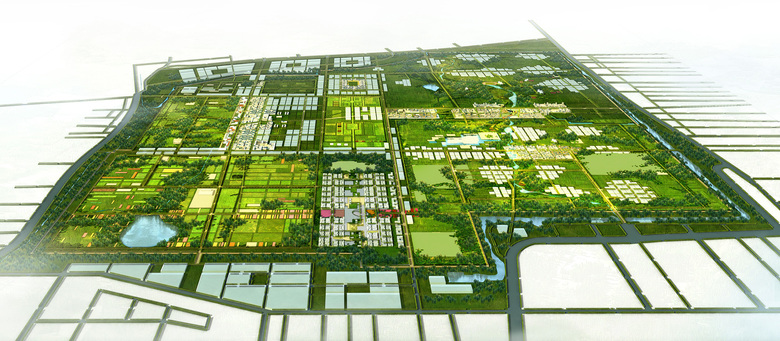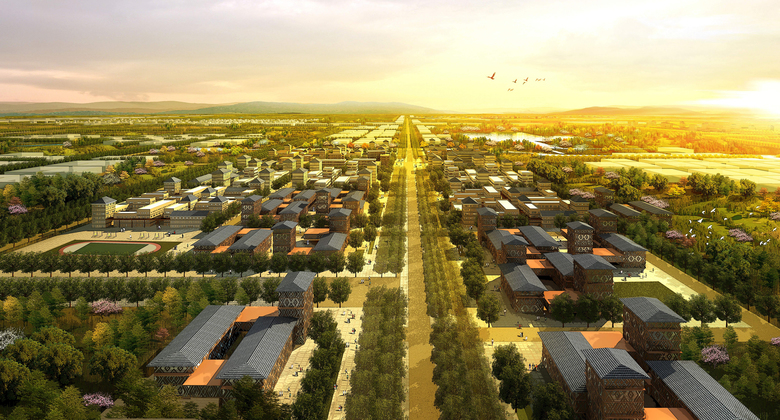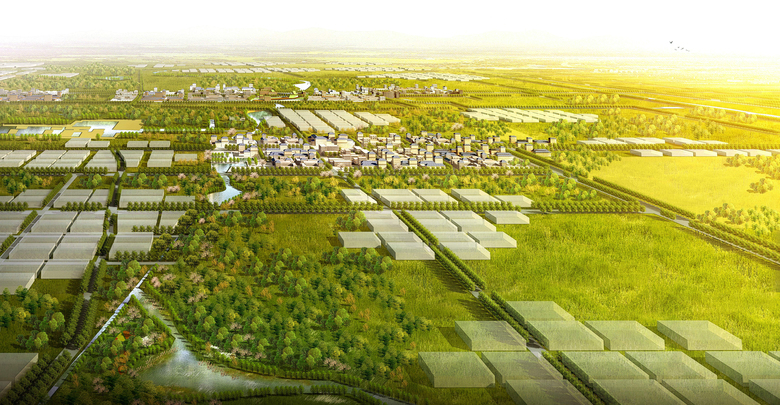Concept planning for the ruined ancient city of Chang’an of Han-Dynasty
Xian
- 建筑师
- 德国ISA意厦国际设计集团
- 位置
- Xian
The archeological site of Changan, dating back to the Han-Dynasty about 202 B.C., is located in the Northwest of the city of Xian, and is protected by national law. Being one of the once greatest capital cities of the world, it spread over an area of 36 square-kilometers, and has, today as in history, an irreplaceable cultural significance. The planning area, including the surroundings, is approximately 45 square-kilometers large, and contains over 80,000 inhabitants. Most archeological monuments are ground monuments, and more than 50% of the area has not yet been evaluated archeologically. The existing uses in the planning area are mostly residential, industrial and agricultural. Because of the continuing growth of the City of Xian, and the resulting space requirements for the urban development, the urban developments stand in conflict with the archeological interests and the ground monuments. The neighbouring urban area, surrounding the planning area, is already constructed with a very high density, and there is a tremendous development pressure on the land itself. This is why the task was to protect the archeological monuments, and to exploit the potential of the planning area in the urban development context. The conflict between built uses and ground monuments should be solved, on the one side, socially and ecologically, and on the other side use the cultural heritage and development potential and integrate the area in the urban- and regional development. In the design draft, the monuments, determined by archeological examinations, should be protected and represented by certain measures, so that the so far indistinguishable traces of the Han-Dynasty are not only protected, but also made perceptible. On the former palace facilities, archeological parks will be developed, with an extensive range of leisure and tourism attractions, so that an attractive sojourn area is created, not only for tourists, but also for the inhabitants. This leisure area should also have a positive effect on the urban and real estate development for the entire city. With a large green share and good ecological quality, the planning area is to become a "green lung" for the city, and become part of the greenery-system of the city. Following the orders and criteria of heritage and monument protection, the planning area will be divided into developable, restrictively developable and not developable areas. The existing villages will either be reconstructed and rehabilitated, or relocated, with the focus on the social planning to save the employments and jobs of the inhabitants, as well as sufficient reparations to the inhabitants, for the time of redevelopment. The historical city plan and the uses and built structures are largely respected and recovered in the planning process, to give the site back its original meaning. A new settlement structure is derived from the idea of cautious reconstruction. The result is an interlocking of settlement area, landscape and monuments that creates a high quality and identity. The architecture of the Han-Dynasty is interpreted in a modern architectural language, and the historical flora is replanted.
Client
Xi’an Qujiang Daming Palace Heritage Site Area Preservation and Development Office
Assignment
multiple assignment
Planning area
approx. 45 sqkm
Inhabitants
approx. 80,000
In cooperation with
Dr. Mosel, Munich
相关项目
杂志
-
The Boulevards of Los Angeles
1 day ago
-
Vessel to Reopen with Safety Netting
1 day ago
-
Swimming Sustainably
2 day ago
